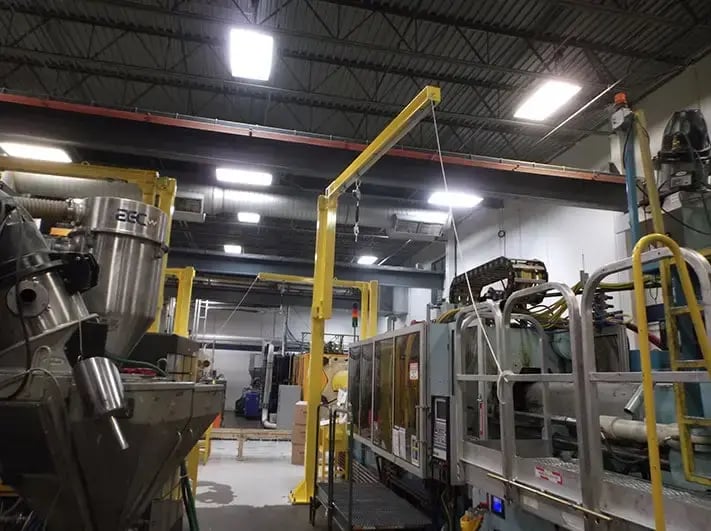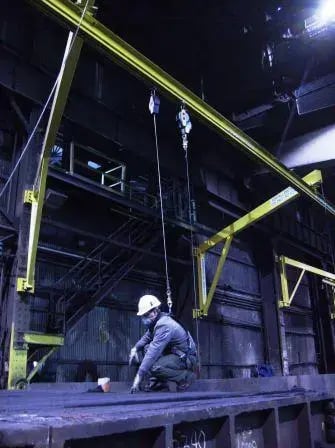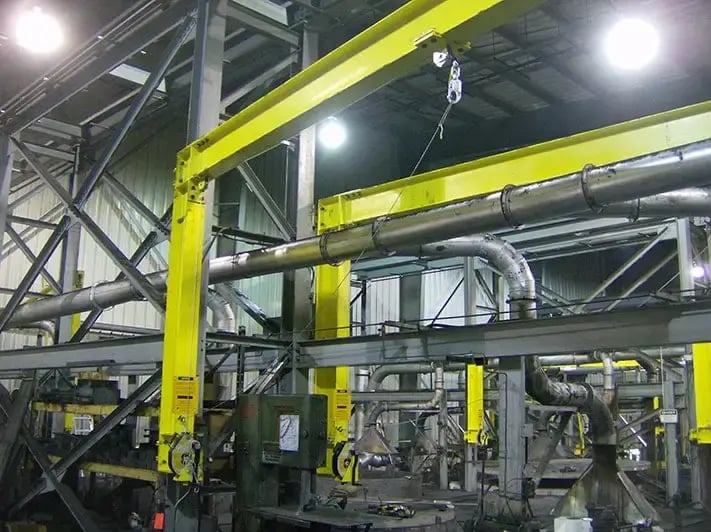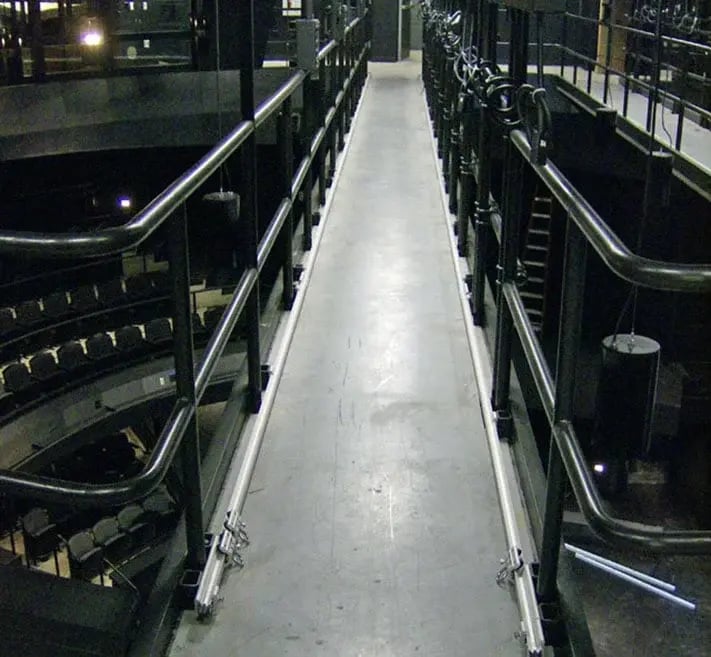Articulating Jib Cranes & Trolley Fall Arrest Systems
Articulating jib and folding trolley systems are rigid rail fall protection solutions that can be moved and retracted as needed. Thanks to their fold-away design, articulating systems are ideal for crane bay applications. Unlike fixed systems that interfere with the movement of an overhead crane, fold-away fall protection systems can be deployed as needed, then retracted when overhead equipment is in use.
Regardless of your crane’s unique path through the plant or the footprint of equipment and obstructions in your crane bay, engineered fold-away or articulating rigid rail fall arrest systems offer solutions. Discover the perfect blend of OSHA compliance, safety, and productivity with rigid rail fall protection from DFP.
Each system DFP installs is the product of an on-site engineering visit, during which safety experts watch the interaction of your equipment and personnel to create a fall arrest system customized to your needs.
Contact DFP for expert assistance with your fall arrest, fall restraint and fall protection requirements.

Related Markets
See Our Articulating Jib and Trolley Systems



Design Considerations
For both articulating jib and trolley rigid systems, it's important to assess the total fall protection coverage area needed to protect workers as they perform routine maintenance and daily duties. A system that can support one worker at a time or multiple users with bypass capability is important to consider when developing specifications and design features.
For jib systems, the distance between building support columns must be taken into consideration. For beam trolley rigid fall protection systems, ascertaining the height of the crane as well as the crane design style (underhung or overhung) will factor into the final system design.

b-1.jpg?width=1368&height=1340&name=Rail%20(175)b-1.jpg)




